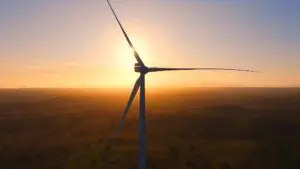The Federal Coalition’s move to put the country in election campaign mode for 15 weeks before its threatened double-dissolution federal poll is likely to put more pressure on the large-scale renewable energy target, which remains stalled since before the Coalition’s election three years ago.
It is now likely that the Coalition will go to the polls on July 2 with virtually nothing to show for its supposed “support” for renewable energy policy, apart from an extended investment drought and just a handful of wind turbines.
This may keep the large and influential anti-wind, conservative faction of the party happy, particularly as the government announces more research funding into the “health impacts of wind farms”. But it poses problems for the Turnbull government, as it seeks to distinguish itself from Abbott-era policies on renewables and climate change.
Despite a change in tone, the details of those policies remain untouched, and prime minister Malcolm Turnbull has repeated many times that the government’s current emissions reductions target is adequate – a view shared by few beyond the climate skeptic camp and vested interests.
It is hard to imagine him saying much different in the lead up to the poll, given the sensitivities within his own party.
The Guardian reports that the two institutions that the Abbott-led Coalition wanted to dismantle, the Australian Renewable Energy Agency and the Clean Energy Finance Corporation, may now be merged and use only borrowing, raising fears that ARENA will effectively be be emasculated.
That’s because ARENA provides grant funding – that it does not expect to get back – to help first-of-a-kind projects. Only then can those projects get project finance from the CEFC. If grants are removed, ARENA effectively fails to exist and new technologies will be unsupported.
John Grimes, from the Australian Solar Council, said “this looks, feels and smells like a cost cutting measure. The Abbott/Turnbull governments have tried unsuccessfully to abolish ARENA and the CEFC. This looks like a backdoor way to gut Australia’s most important clean energy agencies.”
The Clean Energy Council also expressed its concern. “ARENA has played a crucial role in providing capital grants to exciting near-commercial technologies such as large-scale solar, and this investment is helping to rapidly drive down capital costs,” CEO Kane Thornton said.
“While we recognise there are opportunities for more coordination and a closer working relationship between ARENA and the CEFC, it is important that the government continues future support through funding for projects, innovative finance and the high-level research and capability that has been established in these institutions.”
It is only funding from ARENA and CEFC that has allowed any wind or solar projects – apart from those commissioned by the ACT Labor government – to be built over the last 3 years.
On the RET, insiders and analysts say there is no real reason why investment in large-scale wind and solar should halt in an election campaign – apart from the obvious fact that it already has – given that there is bipartisan support for the current RET, and the “worst that can happen” is the re-election of a Turnbull government.
That might be true in normal circumstances were it not for the fact that the fossil fuel industry is hopeful, and the financing industry hopeful, that policy can be changed.
The renewable energy industry’s efforts, to date, to try to break that drought have been fruitless and, despite the huge shortfall looming, an extended election campaign may not be the right time for notoriously conservative financiers to loosen their purse-strings.
The renewable energy industry is well aware of what needs to be done to tweak the RET legislation to make it work – mostly extending the compliance timelines – but won’t campaign on that in the lead-up to the election.
On Monday, before Turnbull announced he would recall parliament and use highly contentious industrial relations laws to trigger a double dissolution on July 2 if it were rejected by the Senate, Bloomberg New Energy Finance said Australia was running out of time to meet its renewable energy target.
It said that even with a “stable policy” – now reduced to 33,000GWh from 41,000GWh – and record certificate prices, which have surged to more than $80/MWh, recently announced programmes and intended projects “may just be enough” to produce the required supply.
“There are many challenges and the market may be cutting it too close,” BNEF said in an excerpt from its quarterly report emailed to RenewEconomy.
“A minimum of 3.1GW of capacity needs to be commissioned by 2018 to avoid a shortfall, which requires 1.8GW of new investment,” it says. “A series of recently announced programmes and projects largely sponsored by government and retailers could deliver this amount, but the timing is tight and will leave the market with little liquidity.”









